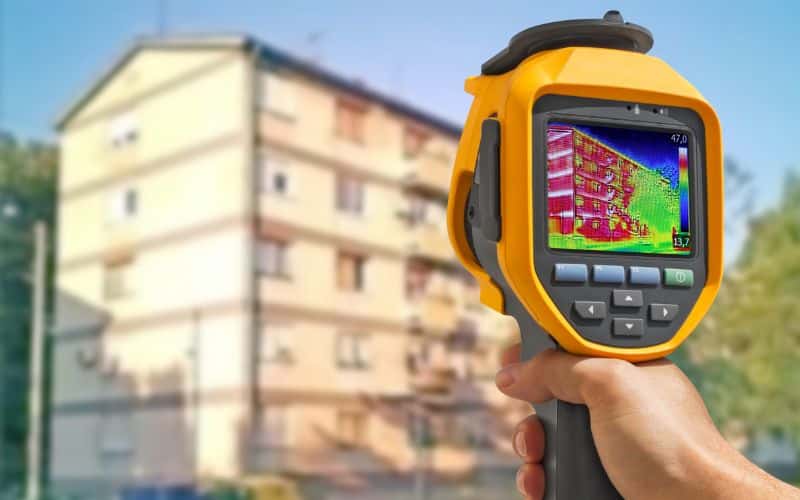
In today’s technologically advanced world, ensuring the reliability and safety of electrical systems is paramount. Thermal cameras have emerged as indispensable tools for electrical inspections, revolutionizing the way professionals detect and address potential issues.
In today’s technologically advanced world, ensuring the reliability and safety of electrical systems is paramount. Thermal cameras have emerged as indispensable tools for electrical inspections, revolutionizing the way professionals detect and address potential issues.
So let’s dive into the critical role thermal cameras play in electrical inspections, highlighting their benefits, applications, and the significant impact they have on enhancing safety and efficiency.
Enhanced Safety and Prevention of Electrical Failures
One of the most compelling reasons for using thermal cameras in electrical inspections is the enhanced safety they provide. Electrical systems, whether in residential, commercial, or industrial settings, are prone to overheating, which can lead to catastrophic failures and even fires. Thermal cameras detect infrared radiation emitted by objects, translating it into temperature readings. This allows inspectors to identify hot spots and areas of excessive heat that are invisible to the naked eye.
By pinpointing these hot spots early, electrical professionals can take preventive measures before the issues escalate into serious problems. For instance, loose connections, overloaded circuits, and faulty components often generate excess heat. Identifying these issues early helps in scheduling timely repairs or replacements, thereby preventing potential electrical failures and reducing the risk of fire hazards.
Non-Intrusive and Efficient Inspections
Thermal cameras provide a non-intrusive method for conducting electrical inspections. Traditional inspection methods often require physical contact with electrical components, which can be risky and time-consuming. In contrast, thermal imaging allows for remote inspection, meaning that inspectors can assess electrical systems from a safe distance without needing to shut down equipment or systems. This not only enhances safety but also minimizes downtime, ensuring that operations continue smoothly.
The efficiency of thermal cameras is another significant advantage. With the ability to quickly scan large areas and identify temperature anomalies, inspectors can cover more ground in less time compared to manual inspection methods. This is particularly beneficial in large industrial settings where electrical systems are extensive and complex.
Applications Across Various Industries
Thermal cameras are versatile tools with applications spanning across various industries. In manufacturing, they are used to monitor electrical panels, motors, and other critical equipment to ensure they operate within safe temperature ranges. In the energy sector, thermal imaging is employed to inspect power lines, transformers, and substations, identifying issues that could disrupt power supply.
In commercial and residential settings, thermal cameras are used to inspect electrical installations, ensuring compliance with safety standards and regulations. They are also invaluable in maintenance programs, enabling regular checks that keep systems running efficiently and extend their lifespan.
Benefits of Using Thermal Cameras
- Early Detection of Issues: Thermal cameras can detect potential problems before they become severe, allowing for proactive maintenance and reducing the likelihood of unexpected failures.
- Increased Safety: By identifying overheating components and hot spots, thermal cameras help prevent electrical fires and ensure the safety of personnel and property.
- Cost Savings: Preventive maintenance facilitated by thermal imaging can save significant costs by avoiding major repairs and minimizing downtime.
- Non-Intrusive Inspection: Thermal cameras enable remote inspections, eliminating the need for physical contact with electrical components and reducing inspection time.
- Comprehensive Analysis: Thermal images provide a visual representation of temperature distribution, making it easier to understand and communicate findings to stakeholders.
Readily Available and Rental Options
Thermal cameras are not only essential but also readily available online, making it convenient for professionals to access and utilize them. Additionally, many suppliers offer rental options, allowing companies to benefit from this technology without the need for a significant upfront investment. You can learn more about rentals at JM Test Systems.
Implementing Thermal Imaging in Inspection Protocols
For organizations looking to integrate thermal cameras into their electrical inspection protocols, there are several key considerations to keep in mind:
- Training: Proper training is essential for operators to effectively use thermal cameras and interpret thermal images accurately. Understanding how to identify false positives and differentiate between normal and abnormal temperature variations is crucial.
- Equipment Selection: Choosing the right thermal camera is important. Factors such as resolution, sensitivity, and range should be considered based on the specific needs of the inspection tasks.
- Regular Inspections: Establishing a routine inspection schedule ensures that potential issues are detected early. Regular thermal imaging inspections should be a part of the overall maintenance program.
- Data Management: Efficiently managing and analyzing thermal images and data is critical. Investing in software that helps in organizing, analyzing, and reporting findings can enhance the effectiveness of thermal inspections.
Conclusion
The importance of thermal cameras for electrical inspections cannot be overstated. They play a vital role in enhancing safety, preventing electrical failures, and improving the efficiency of inspection processes. By enabling early detection of issues, providing non-intrusive inspection methods, and offering versatile applications across various industries, thermal cameras are indispensable tools for modern electrical inspections. Organizations that invest in thermal imaging technology not only ensure the safety and reliability of their electrical systems but also achieve significant cost savings and operational efficiencies.